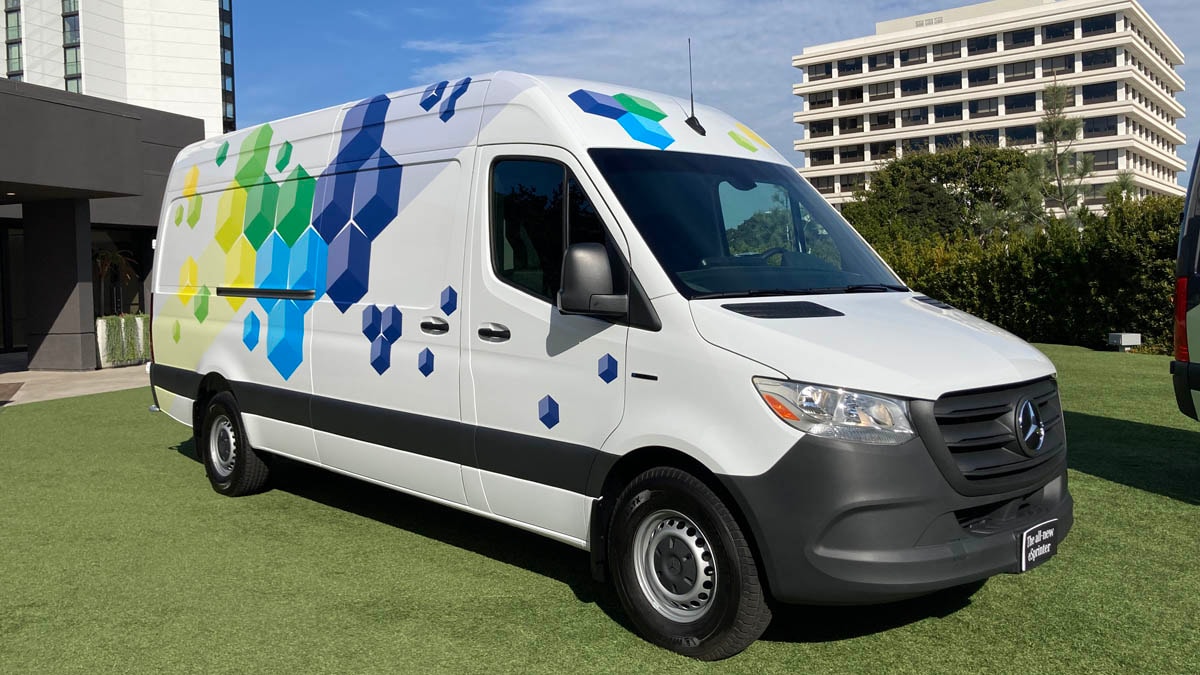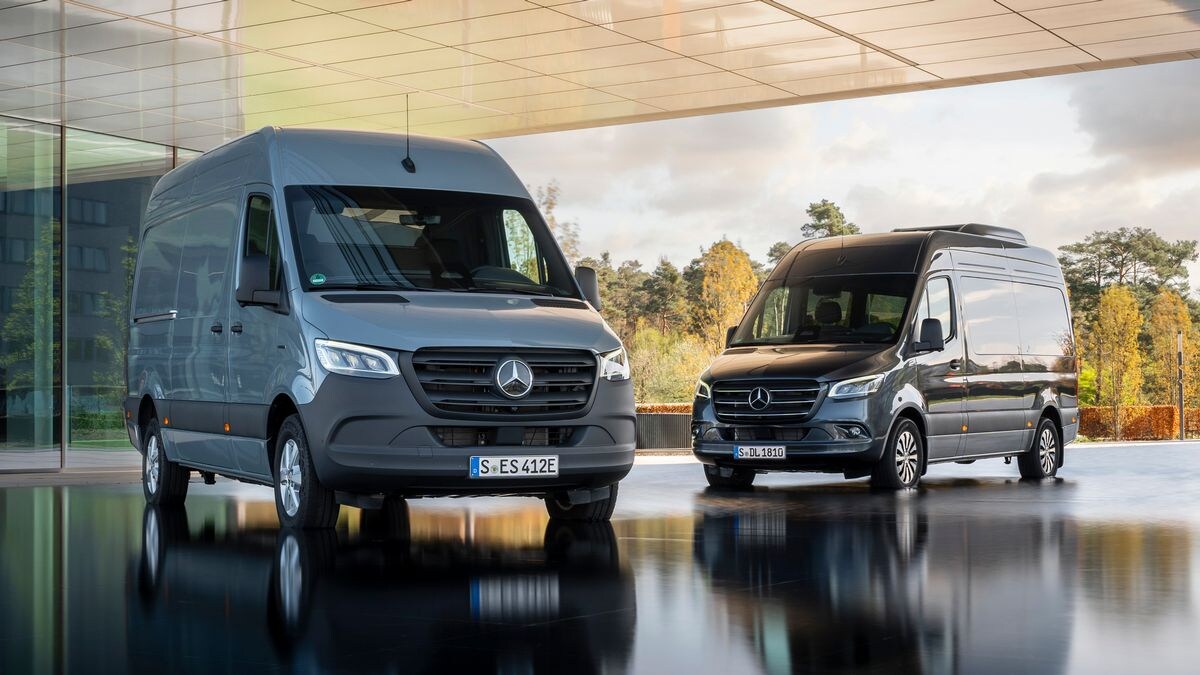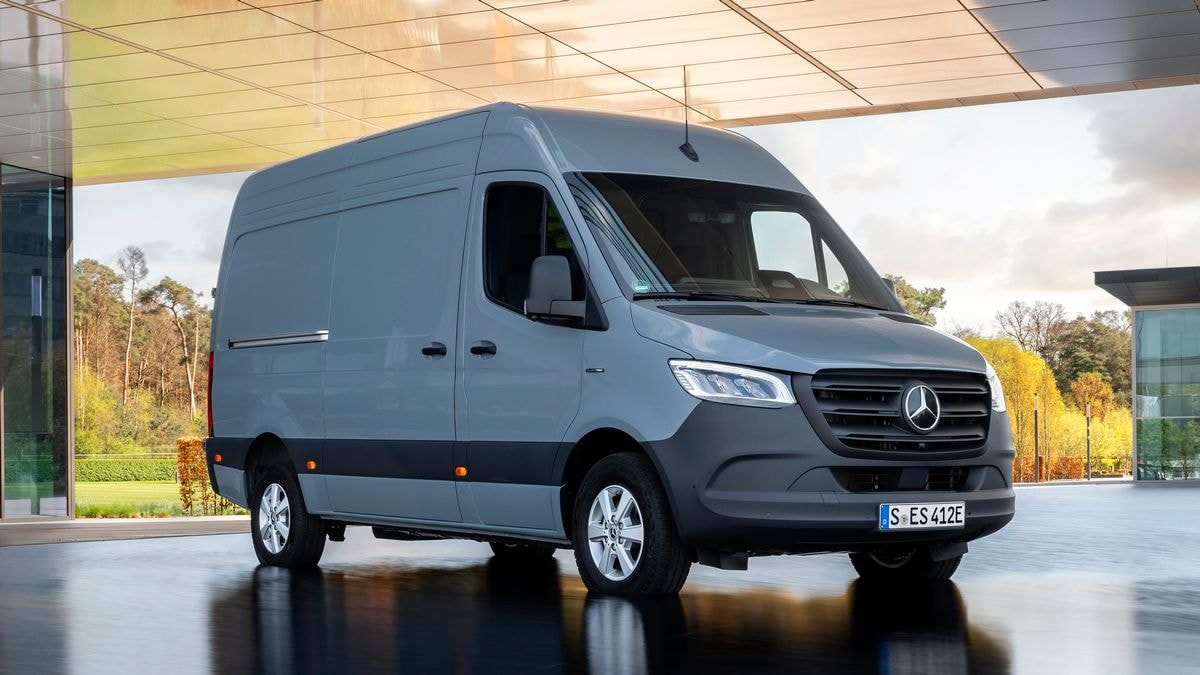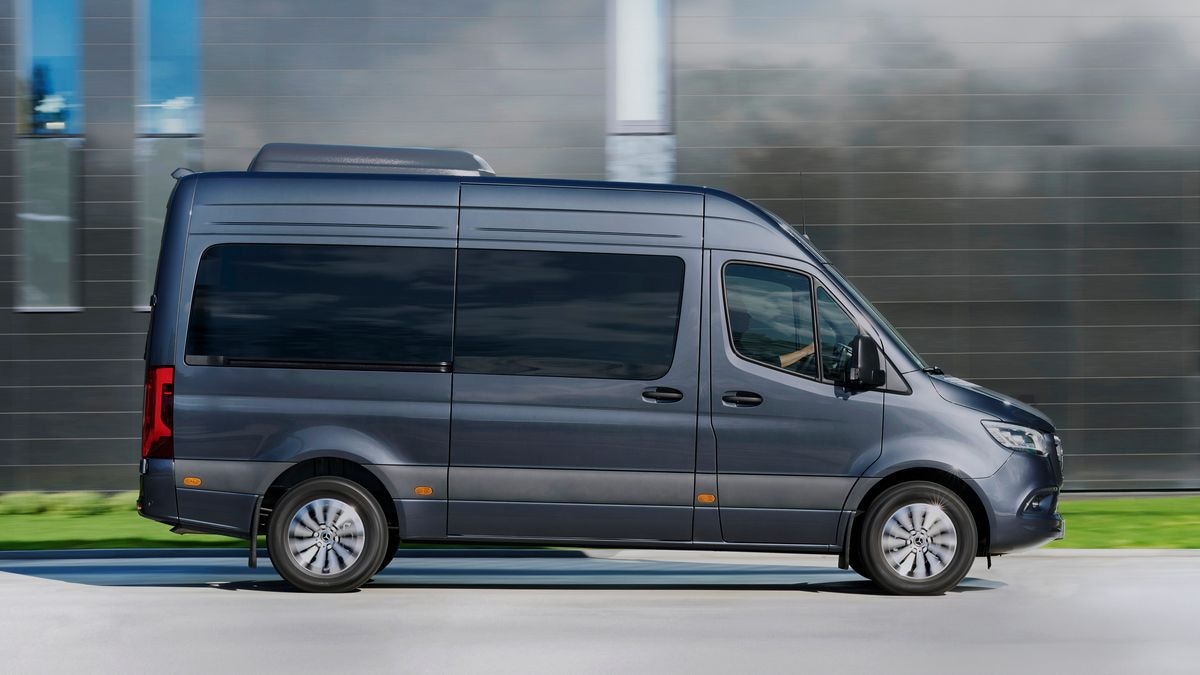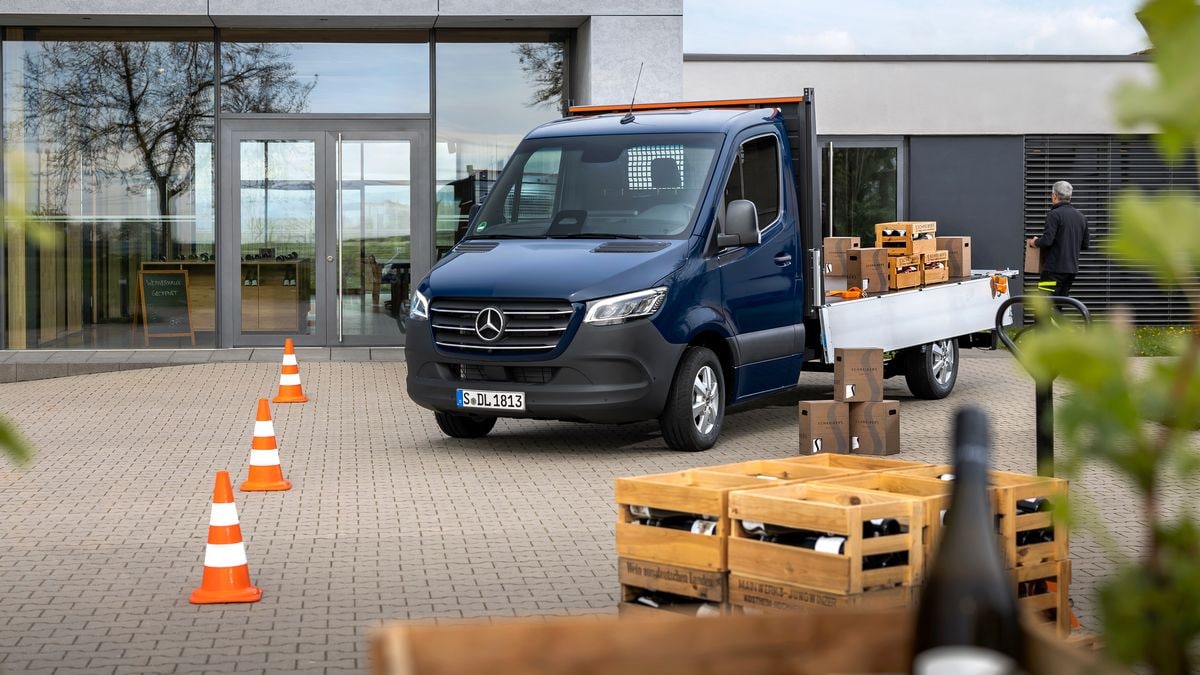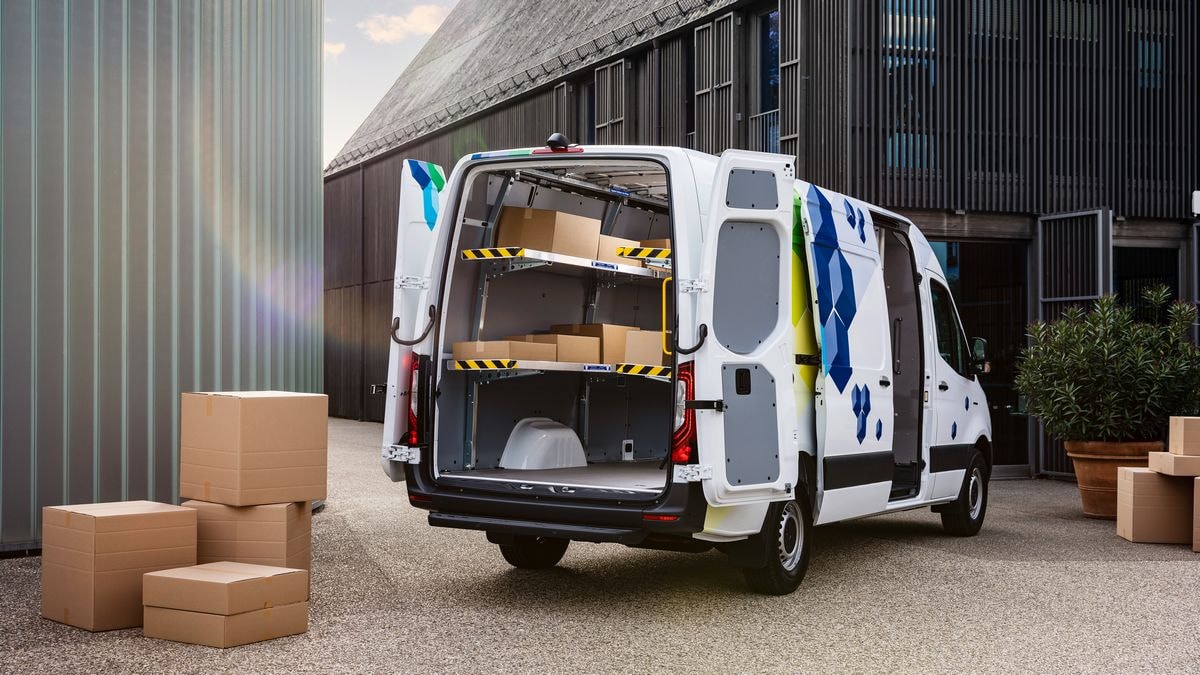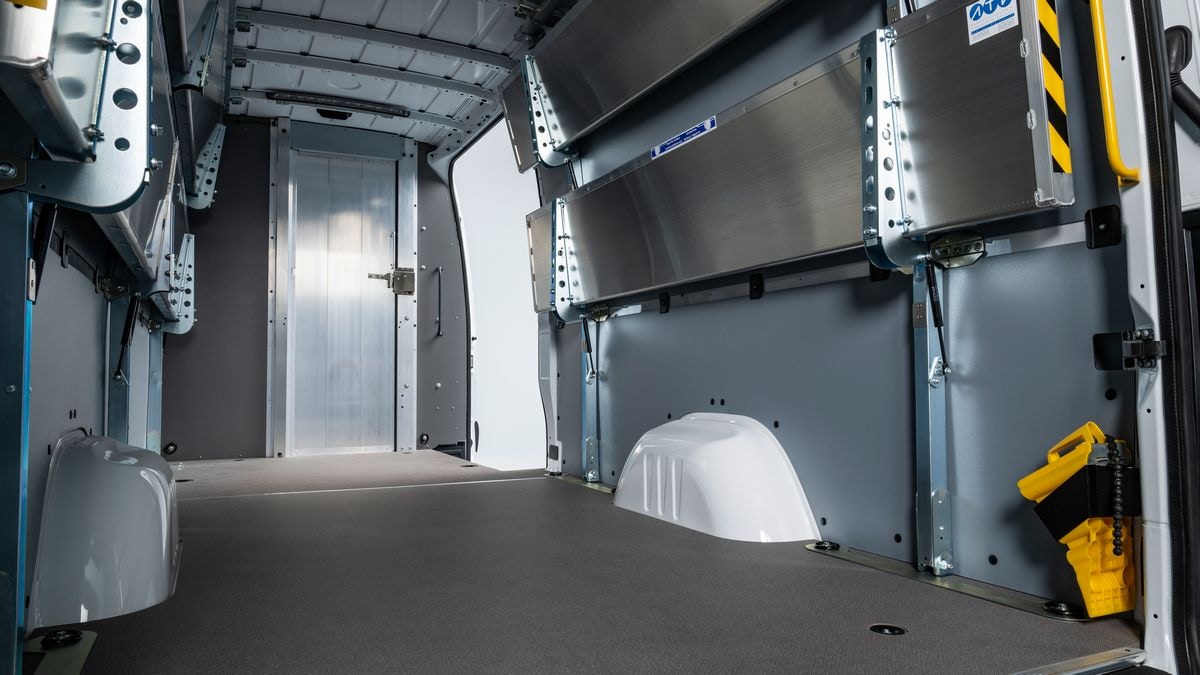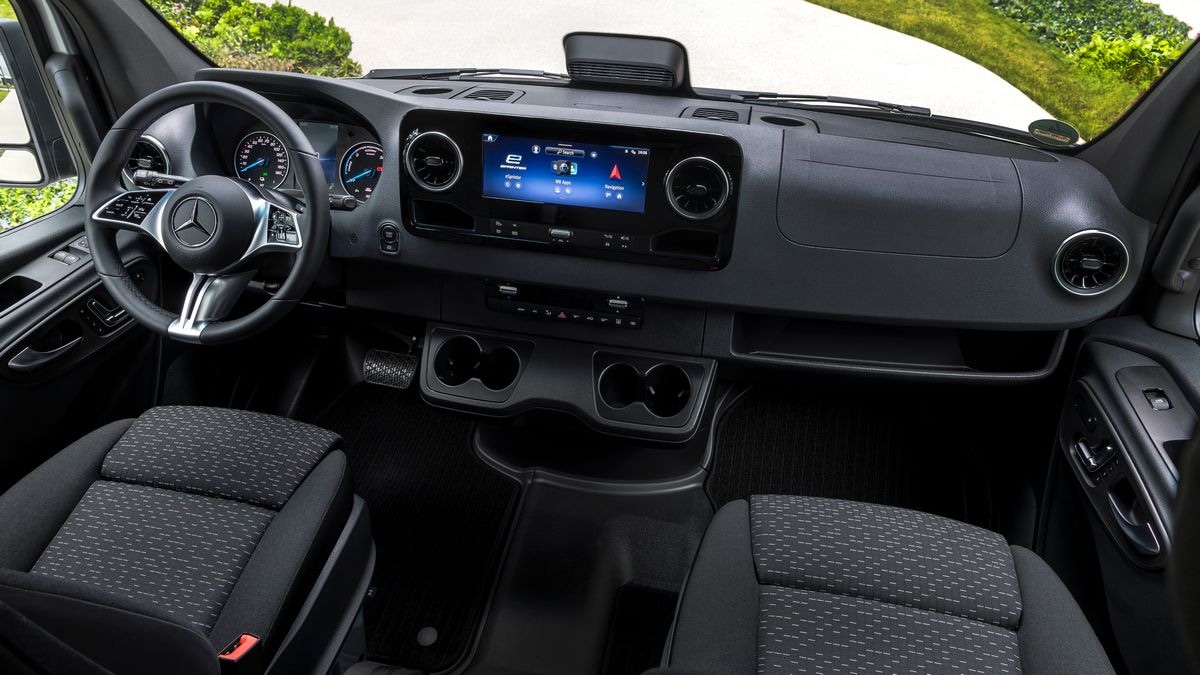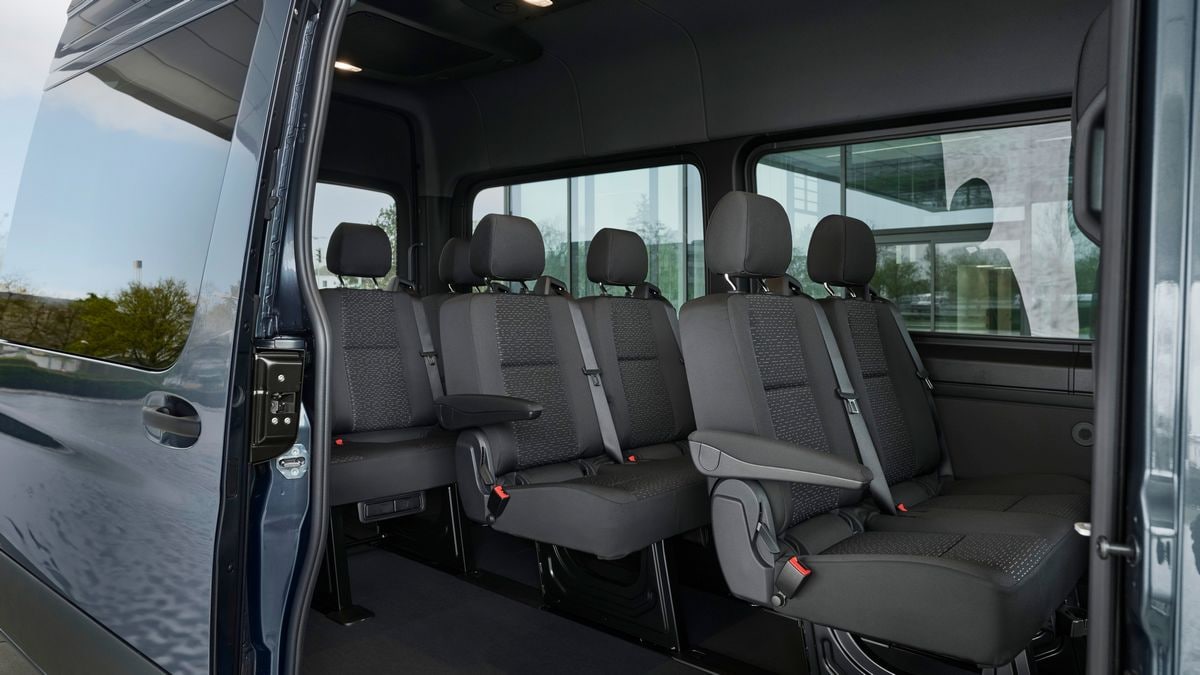Quick Facts About the Mercedes-Benz Sprinter Van
- The Mercedes-Benz Sprinter van provides more cargo space than its segment rivals.
- Offering multiple configurations, the Sprinter can be tailored to fulfill nearly any large van need.
- The Crosswind Assist enhances the stability of the Sprinter in gusty weather.
- The all-electric eSprinter van produces an estimated 204 miles in range.
Among the five competitors duking it out in the full-size van segment, the Mercedes-Benz Sprinter is the only one with a turbodiesel engine. Therefore, it has somewhat of a maintenance advantage over its competitors. However, for some, its above-average price may stymie consideration. On the other hand, like its segment rivals, the Sprinter comes in several sizes and configurations. We’ve put together a list of 10 things you should know about the Sprinter as you ponder buying one.
10 Things You Need to Know
- Luxury pricing: As a luxury brand, Mercedes-Benz vehicle pricing is usually considered against models from BMW, Audi, and other high-end brands. However, in the van segment, the competition is from mainstream brands: Ford, Ram, GMC, and Chevrolet. Because of content, powertrains, and other factors, full-size van price comparisons aren’t always apples to apples. But the fact remains that the starting prices for the Sprinter’s rivals begin in the $40,000 range while the 2025 Sprinter begins at over $52,000, including the dealer-to-factory delivery fee. The somewhat dated GM vans start about $10,000 less.
- eSprinter: An all-electric version of its full-size van isn’t unique to Mercedes-Benz. Only the GM vans don’t offer an all-electric model. For commercial enterprises primarily operating in urban areas, an all-electric van reinforces their image as good community citizens while reducing emissions and operational costs. With the larger available battery, the eSprinter claims a class-leading estimated range of 249 miles. The standard battery produces an estimated range of 204 miles. For context, the Ford E-Transit’s maximum is 159 miles, while the Ram ProMaster EV’s estimated maximum range is 162 miles. Both Sprinter batteries need less than an hour to reach an 80% charge on a DC fast charger. Read more: Mercedes eSprinter Joins Electric Van Fray
- Multiple configurations: Mercedes-Benz offers the Sprinter as the Cargo Van, Crew Van, and Passenger Van, each with its own combination of wheelbase lengths, two roof heights, and at least two overall lengths. This makes for a versatile conveyor of people and cargo. The possible variations aren’t as numerous as the Transit offers; however, the Sprinter covers a lot of bases. Moreover, Mercedes also offers a commercial-focused Sprinter Cab Chassis model used as the backbone for a variety of vehicles like ambulances, RVs, and other specialized haulers. Read more: The New Must-Have Fashion Accessory: a Mercedes-Benz Sprinter Van.
- Better cargo capacity: Posting solid cargo numbers, the Sprinter maximizes its cargo-carrying capacities. For the Cargo Van the range is a minimum of 319 cubic feet to the maximum of 533 cubic feet. The Passenger Van’s spread is 70 to 111 cubic feet. For the 5-person Crew Cab, the numbers are 240 to 371 cubic feet. These are better-than-average numbers. For example, the Transit’s range is 247 to 487 cubic feet. BTW, the eSprinter can haul 488 cubic feet of cargo.
- Two turbodiesel engines for extra power: Although often referred to as two turbodiesel engines, technically, it’s two versions of the same turbodiesel. The less aggressive base mill is a 170-horsepower 4-cylinder engine with a single turbocharger. The upgraded twin-turbo, high-output (HO) version of the same engine generates 211 hp. The Sprinter is the only van in its class to offer a diesel engine. A 9-speed automatic transmission spins the wheels regardless of the engine variant or the number of drive wheels.
- Service interval of 20,000 miles: Among its rivals like the Ford Transit Van, Ram ProMaster, or GMC Savana, the Sprinter has by far the longest miles between scheduled service: one year or 20,000 miles. Although the one-year part is nothing special, the 20,000 miles is twice that of the Ford Transit. This is attributed to the Sprinter’s turbodiesel powertrain.
- All-wheel drive for foul weather: Available in every Sprinter model, the Mercedes-Benz 4Matic all-wheel drive is a transparent system that monitors wheel spin, automatically shifting engine torque to the wheels with grip. Mercedes only matches it with the more powerful high-output turbodiesel. The 4Matic AWD system isn’t so much for more aggressive off-roading as it is a remedy for slipping and sliding in foul weather. However, it’s almost a must-have in the snowbelt.
- Mercedes-Benz User Experience (MBUX): This optional cutting-edge infotainment system with learning capability is based on artificial intelligence technology. Mercedes provides four methods of operation: voice control (Hey, Mercedes), a 10.25-inch touchscreen, steering-wheel-mounted control buttons, or the touchpad.
- Crosswind Assist keeps the van steady: A common issue with slab-sided vehicles of any size is their propensity to be pushed around by gusts of wind. In its Sprinter, Mercedes addresses the issue by engineering Crosswind Assist. It reacts to strong gusts of crosswind to help Sprinter drivers maintain their intended course while enhancing stability. At speeds over 50 miles per hour, it corrects the vehicle’s direction by means of automatic braking intervention on the wheels on the side of the vehicle facing the wind.
- Mercedes me connect services: The Mercedes me connect app provides the usual list of owner benefits, like remote vehicle start, remote door lock/unlock, vehicle location, and other services. Fleet managers can take advantage of add-ons like the Efficient Fleet Management Bundle, which offers a wide collection of functions, such as a digital driver’s log, trip management, and other fleet-management assets.
